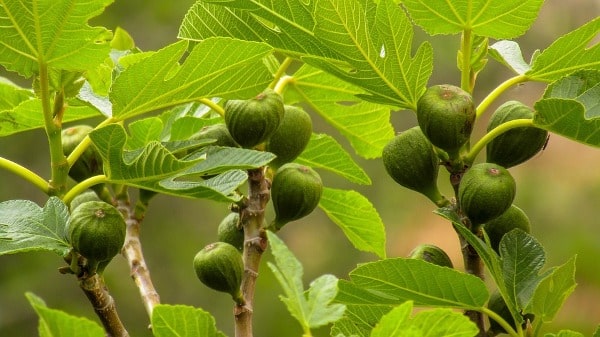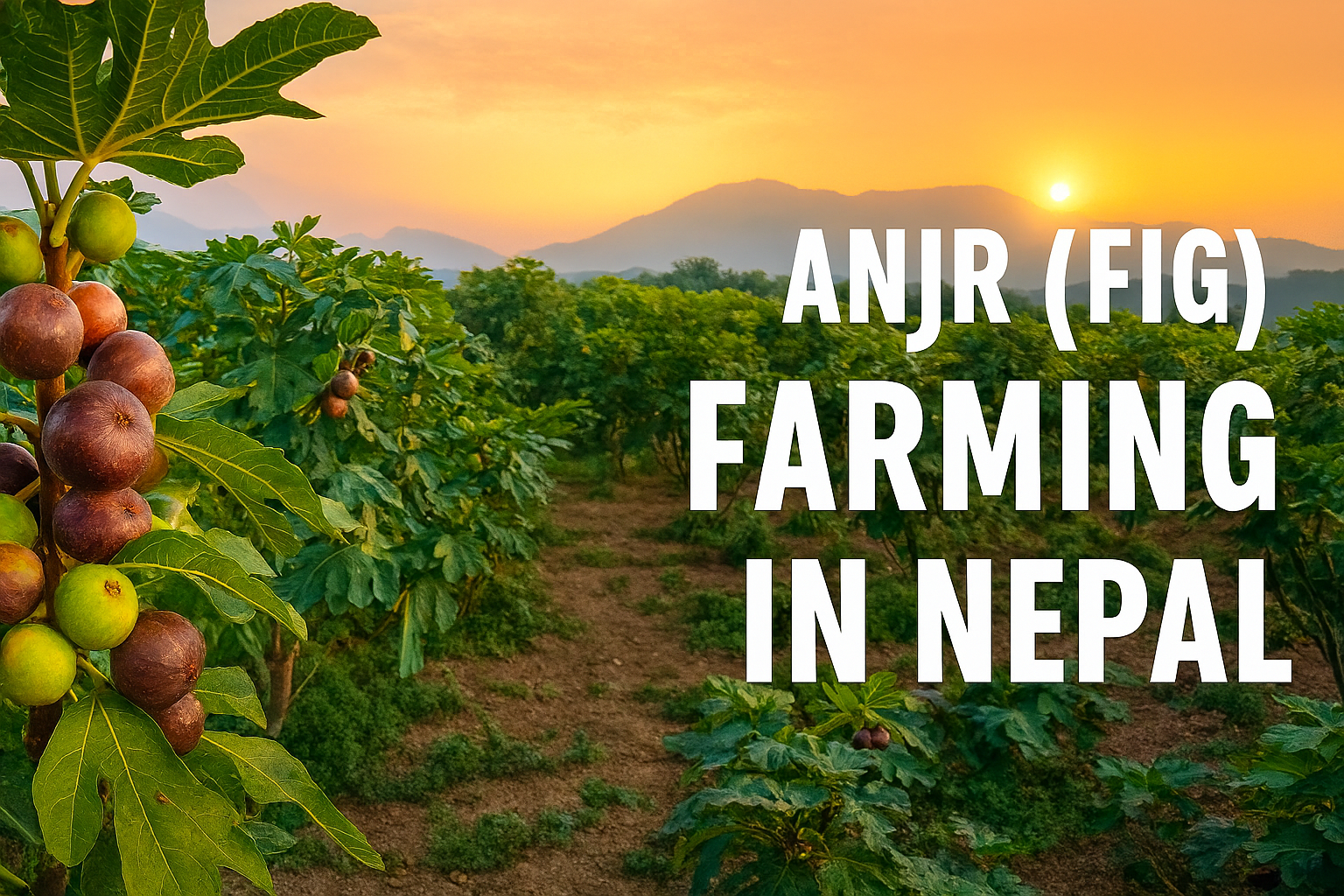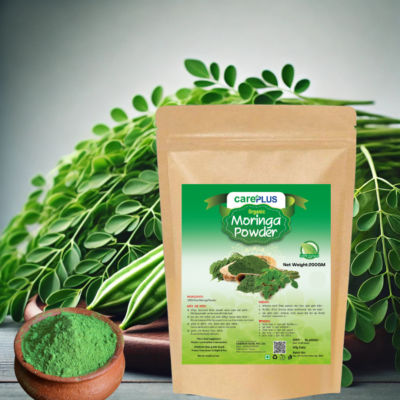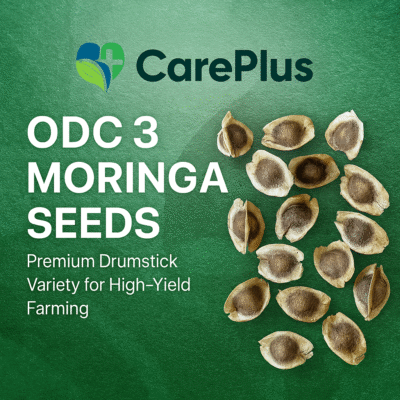🌿 Anjir (Fig) Farming in Nepal: A Complete Guide to Cultivation, Investment & Profitability
Introduction
Anjir, commonly known as fig, is a nutrient-rich fruit gaining popularity in Nepal for its health benefits and commercial potential. Traditionally grown in Mediterranean climates, figs are now being cultivated successfully in Nepal’s mid-hill and Terai regions. With rising demand in urban wellness markets and export opportunities, Anjir farming offers a promising venture for agri-entrepreneurs, homestead growers, and eCommerce platforms like Sajha Dokan.
This guide explores every aspect of fig farming—from land preparation and nursery setup to harvesting, marketing, and profit analysis.
🌱 1. Land Preparation
Climate & Soil Requirements
Figs thrive in warm, dry climates with moderate rainfall. Ideal growing zones in Nepal include:
- Terai belt: Chitwan, Dang, Banke
- Mid-hills: Dhading, Kavre, Palpa, Tanahun
Soil Type: Well-drained loamy or sandy loam soil with pH between 6.0–7.5.
Land Preparation Steps
- Plowing: Deep plowing (30–40 cm) to break hardpan and improve root penetration.
- Soil Enrichment: Mix 20–25 tons of well-decomposed farmyard manure (FYM) per hectare.
- Drainage: Create raised beds or mounds to prevent waterlogging.
- Solarization: Optional step to reduce soil-borne pathogens using plastic mulch.
🌿 2. Propagation & Seed Selection
Propagation Methods
Figs are typically propagated through:
- Hardwood Cuttings: 20–30 cm long cuttings from mature trees. Most popular and cost-effective.
- Grafting: Used for specific hybrid varieties.
- Tissue Culture: Rare in Nepal but viable for large-scale commercial farms.
Recommended Varieties for Nepal
| Variety | Features | Suitability |
|---|---|---|
| Poona Fig | Sweet, medium-sized, drought-tolerant | Terai & mid-hills |
| Black Mission | High yield, dark skin, export-grade | Mid-hills |
| Brown Turkey | Cold-resistant, large fruit | High hills |
| Dinkar (India) | Commercial variety, fast-growing | Terai |

🌱 3. Nursery Management
Nursery Setup
- Use polybags or raised beds with sandy loam soil.
- Maintain partial shade and consistent moisture.
- Apply fungicide to prevent damping-off and root rot.
Timeline
- Cuttings root in 3–4 weeks.
- Transplant after 3–4 months when roots are well-developed.
Cost Estimate
- NPR 15–25 per cutting
- NPR 10,000–15,000 for a small nursery (500–1000 plants)

🌳 4. Orchard Establishment
Spacing & Layout
- Spacing: 3m x 3m or 4m x 4m depending on variety and terrain.
- Planting Season: February–March (spring) or August–September (monsoon end).
Irrigation
- Drip irrigation recommended for water efficiency.
- Avoid waterlogging—figs are drought-tolerant but sensitive to root rot.

Fertilization Schedule
| Fertilizer | Quantity/Plant/Year | Application Time |
|---|---|---|
| FYM | 10–15 kg | Winter (Dec–Jan) |
| Nitrogen | 500g | Split doses (Feb & July) |
| Phosphorus | 250g | At planting & flowering |
| Potassium | 500g | Fruit development |
Pruning & Training
- Annual pruning improves canopy shape and fruit yield.
- Remove suckers and dead branches post-harvest.
🐛 5. Pest & Disease Management
Common Issues
- Rust: Yellow spots on leaves
- Fruit Borers: Damage to ripening fruit
- Nematodes: Root damage in poor soils
Organic Solutions
- Neem oil sprays (weekly during flowering)
- Copper fungicides for rust
- Crop rotation and soil solarization

🍈 6. Harvesting & Post-Harvest
Harvest Timeline
- Fruiting begins in 2nd year; commercial yield from 3rd year onward.
- Harvest season: May–July and September–November (two flushes possible)
Yield
- 8–10 tons/acre annually from mature orchards
- 1–2 kg/plant in early years, up to 10 kg/plant in year 5+
Post-Harvest Handling
- Figs are delicate—harvest early morning and store in cool, dry conditions.
- Shelf life: 3–5 days fresh; 6–12 months dried
📈 7. Investment & Profit Analysis
Initial Investment (Per Acre)
| Component | Cost (NPR) |
|---|---|
| Land Prep & Nursery | 1.5–2 lakh |
| Irrigation & Fencing | 1–1.5 lakh |
| Saplings (1000 plants) | 1–1.2 lakh |
| Maintenance (Yearly) | 50,000–70,000 |
Revenue Potential
| Product | Price Range (NPR/kg) | Annual Yield | Gross Income |
|---|---|---|---|
| Fresh Figs | 150–300 | 8–10 tons | 12–15 lakh |
| Dried Figs | 800–1200 | 2–3 tons | 16–30 lakh |
Net Profit
- From 4th year onward: NPR 8–10 lakh/acre annually
- ROI: 200–300% over 5 years
🛒 8. Market Opportunities in Nepal
Domestic Demand
- Urban wellness markets: Kathmandu, Pokhara, Butwal
- Hotels, restaurants, and Ayurvedic clinics
Export Potential
- Dried figs to India, UAE, and Europe
- Value-added products: fig jam, fig bars, fig tea
eCommerce & Branding
- Sell via Sajha Dokan, Daraz, or own Shopify store
- Create branded packaging for dried figs and fig-based snacks
- Use Pinterest and Instagram for visual marketing
💡 9. Tips for Success
- Start with 100–200 plants for trial before scaling.
- Collaborate with agri co-ops or local nurseries for cuttings.
- Use organic practices to tap into premium health markets.
- Offer agro-tourism or fig-picking experiences for added income.
📌 Conclusion
Anjir farming in Nepal is more than a trend—it’s a sustainable, profitable, and health-driven agricultural opportunity. With proper planning, organic practices, and smart branding, fig cultivation can transform small farms into high-value enterprises. Whether you’re a homestead grower or an eCommerce entrepreneur, figs offer a sweet path to success.





